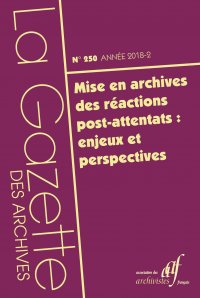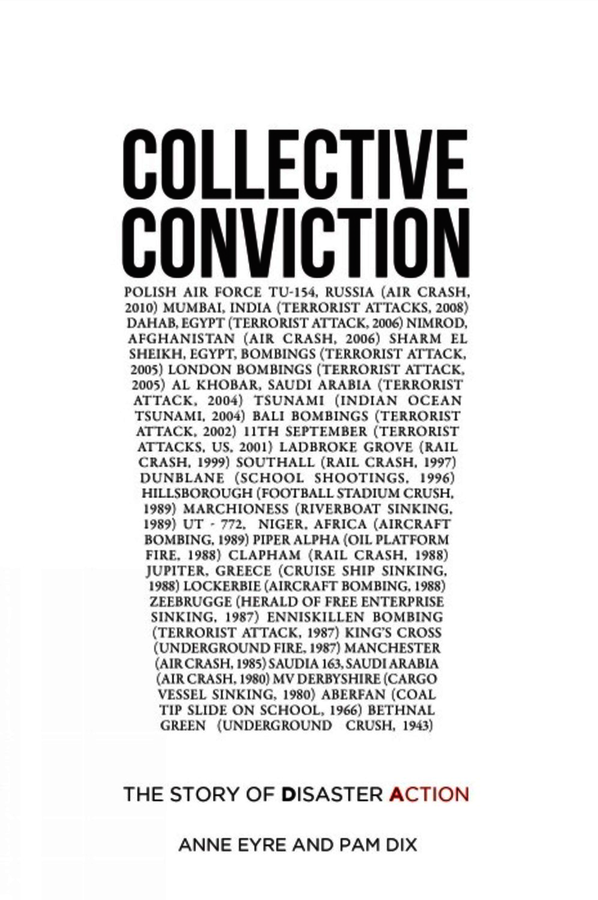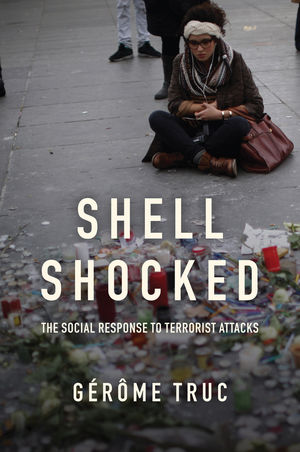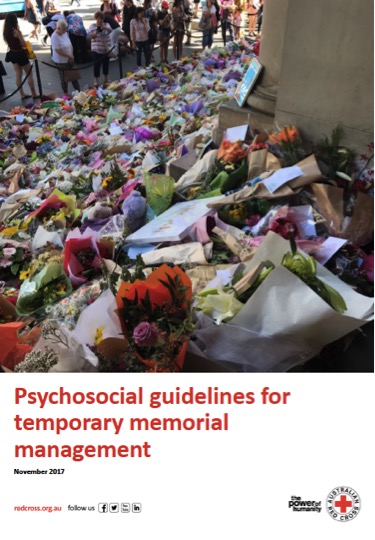Arvanitis, K. and Kavanagh, J. 2025. The impact of collecting after sudden, unforeseen or violent events on the mental wellbeing of the record-keeping workforce [PDF]. Commissioned report by the Archives & Records Association UK & Ireland.
Arvanitis, K., Bolton, L. Marsden, J. McKenzie, E. and Wallace, A. 2024. “The Ethics of Response-ability in Collecting Spontaneous Memorials” in Cordner, S., Kavanagh, J., Miles, E. and West, R.L. and Cordner, S. (eds). Ethics of Contemporary Collecting. London: Routledge, pp. 62-74.
Arvanitis, K. 2024. “Ethics of Care in Collecting Spontaneous Memorials” in Bounia, A. and Witcomb, A. (Eds) The Ethics of Collecting Trauma: The role of museums in collecting and displaying contemporary crises. London: Routledge, pp. 179-197.
Arvanitis, K. and Simpson, R. 2024. “Making, Sharing and Extending Presence of Spontaneous Memorials in the Aftermath of the Manchester Arena bombing” in Karcher, K., Dimcheva, Y. and Medina, M. (eds). Remembering, Forgetting and Anticipating Urban Terrorism in Europe since 2004. London: Palgrave Macmillan, pp. 161-188.
Arvanitis, K. 2019. “The ‘Manchester Together Archive’: researching and developing a museum practice of spontaneous memorials”, Museum and Society, 17(3), 510-532 [PDF}
Arvanitis, K. 2019. “Collecting, Documenting and Using Spontaneous Memorials: the case of the ‘Manchester Together Archive’” ARC Magazine, August, 361, 11-13.
Arvanitis, K. 2018. Creating, Documenting and Using Archives of Spontaneous Memorials. International Workshop. Report.
Bazin, M. 2017. Quand la rue prend le deuil : les mémoriaux éphémères post-attentats La Vie des idées.
Bazin, M. 2016. L’énonciation d’un deuil national. Usages de “Je suis Charlie” dans les écritures urbaines, in P. Lefébure & C. Sécail (ed.) Le Défi Charlie. Les médias à l’épreuve des attentats: 153–86. Lemieux Editeur. http://journals.openedition.org/lectures/19808.
Bazin, M. & G. Truc. 2018. “The Keepers of Memory: mobilizations and conflicts of appropriation around post-terrorist attacks memorials in Madrid, London and Paris” Ethnologie Française.

Bazin, M. & M. Van Eeckenrode. 2018. “Introduction. L’archiviste et l’événement traumatique”. La Gazette des Archives, 250.
Boquet, F. 2017. “Les Archives de la Ville de Bruxelles face aux attentats du 22 mars 2016”. Cahiers Bruxellois – Brusselse CahiersXLIX: 59–76. https://www.cairn.info/revue-cahiers-bruxellois-2017-1-page-59.htm.
Boquet, F. & M. Van Eeckenrode. 2018a. “Archiver l’éphémère après les attentats de Bruxelles. Une réflexion théorique”. La Gazette des Archives, 250.
Boquet, F. 2018b. “Archiver un lieu, documenter un geste. Les mémoriaux éphémères des attentats de Bruxelles”, in Archiver le temps présent. Les fabriques alternatives d’archives. Actes des Journées des Archives. Louvain-la-Neuve. https://uclouvain.be/fr/decouvrir/archives/evenements/journees-des-archives-2018-archiver-le-temps-present.html.
Collins, H., Allsopp K., Arvanitis, K., Chitsabesan, P., and French P. 2020. ‘Psychological impact of spontaneous memorials: A narrative review’, Psychological Trauma: Theory, Research, Practice, and Policy, Online First Publication (6,120 words), March 19, 2020. http://dx.doi.org/10.1037/tra0000565.
Carden-Coyne, Ana. 2009. Reconstructing the body classicism, modernism, and the First World War. Oxford: Oxford University Press.
Carden-Coyne, A. 2003. “Gendering Death and Renewal: Classical Monuments of the First World War”. Humanities Research,10(2).
Carden-Coyne, Ana., T. Wilcox., D.C. Price., S. Biernoff. & Manchester Art Gallery 2014. The Sensory War 1914 – 2014. Manchester: Manchester City Art Gallery.
Ceselli, A. & M. Pintault. 2018. “De la rue aux Archives de Paris : le traitement des hommages aux victimes des attentats de novembre 2015”. La Gazette des Archives, 250. https://www.archivistes.org/Mise-en-archives-des-reactions-post-attentats-enjeux-et-perspectives.
Collins, H., Allsopp K., Arvanitis, K., Chitsabesan, P., and French P.2020. ‘Psychological impact of spontaneous memorials: A narrative review’, Psychological Trauma: Theory, Research, Practice, and Policy, Online First Publication, March 19, 2020.
Duvigneau, M. 2018. Nice, 14 juillet 2016. “Collecte des hommages déposés au kiosque à musique : les Archives sous tension”. La Gazette des Archives,250. https://www.archivistes.org/Mise-en-archives-des-reactions-post-attentats-enjeux-et-perspectives.
Eyre, A. 2018. “Book Review: Shell Shocked: The Social Response to Terrorist Attacks by Gérôme Truc”. The Sociological Review Blog. 17h December
Eyre, A. 2018. “Remembering: Community Commemoration After Disaster”, in H. Rodríguez, W. Donner, & J.E. Trainor (ed.) Handbook of Disaster Research, 2nd ed. Handbooks of Sociology and Social Research. Springer International Publishing. //www.springer.com/gb/book/9783319632537.
Eyre, A. 2012. “The Fields of Anfield Road: Understanding the Memorials and Sepulchral Culture of Liverpool FC”, in M. Herzog (ed.) Memorialkultur im Fußballsport: Medien, Rituale und Praktiken des Erinnerns, Gedenkens und Vergessens, 1. Aufl.: 173–98. Stuttgart: Kohlhammer W., GmbH.
Eyre, A. 2007. “Post Disaster Memorials and Services”, in A. Stock & C. Stott (ed.) Representing the Unimaginable. Frankfurt am Main: Peter Lang. https://www.peterlang.com/view/title/49063.
Eyre, A. 2006b. “Literature and Best Practice Review and Assessment: Identifying people’s needs in major emergencies and best practice in humanitarian response”. DCMS. https://assets.publishing.service.gov.uk/government/uploads/system/uploads/attachment_data/file/61224/ha_literature_review.pdf.
Eyre, A. 2006a. “Community support after disasters. Winston Churchill Memorial Trust”. https://www.wcmt.org.uk/fellows/reports/community-support-after-disasters.
Eyre, A. 1999. “In Remembrance: Post-disaster Rituals and Symbols”. Australian Journal of Emergency Management, The14: 23. https://search.informit.com.au/documentSummary;dn=392074388428210;res=IELHSS.

Eyre, A. & P. Dix. 2014. Collective Conviction: The Story of Disaster Action. Liverpool: Liverpool University Press.
Hartig, K., B. Jensen., A. Wallenius. & E. Boogh. 2018. “Collecting the Ephemeral Social Media Photograph for the Future – Why Museums and Archives Need to Embrace New Work Practices for Photography Collections” – MW18: Museums and the Web 2018.Vancouver, Canada. https://mw18.mwconf.org/proposal/collecting-the-networked-social-digital-photograph-from-the-perspective-of-archives-and-museums/.
Pintault, M. 2017. “Archiver l’éphémère : pratiques et enjeux”. https://reat.hypotheses.org/392.
Truc, G. 2018. “Témoigner (virtuellement) sa solidarité aux victimes. Les usages d’un dispositif informatique en gare d’Atocha après l’attentat du 11 mars 2004 à Madrid”. Réseaux,210: 23–51.
— (ed.) 2017b. “Spontaneous memorialization”. Memory at stake4. http://www.memoires-en-jeu.com/dossier/memorialisations-immediates.

Truc, Gérôme. 2017a. Shell Shocked: The Social Response to Terrorist Attacks. (trans.) A. Brown. Wiley.
“Book Review: Shell Shocked: The Social Response to Terrorist Attacks”. The Sociological Review Blog. 17 Dec 2018. By Anne Eyre
Truc, G. 2015. “Venir à Ground Zero, se souvenir du 11-Septembre Espaces”.Temps.net. http://www.espacestemps.net/articles/venir-a-ground-zero-se-souvenir-du-11-septembre/.
Truc, G. 2012. “Memory of places and places of memory: for a Halbwachsian socio-ethnography of collective memory”. International Social Science Journal203–204: 147–59.
Truc, G. 2011b. “Archivo del Duelo project at CSIC after Madrid bombings, from 2006 to 2011”, in C. Sánchez-Carretero (ed.) El Archivo del Duelo. Análisis de la respuesta ciudadana ante los atentados del 11 de marzo en Madrid: 207–27. Madrid: CSIC. https://www.casadellibro.com/libro-el-archivo-del-duelo-analisis-de-la-respuesta-ciudadana-ante-los-atentados-del-11-de-marzo-en-madrid/9788400092870/1851249.
Truc, G. 2011a. “Analyser un corpus illisible ? Le logiciel Alceste confronté à des registres de condoléances”. Langage et Société,135: 29–45.
Truc, G. 2006. “Le cosmopolitisme sous le coup de l’émotion. Une lecture sociologique des messages de solidarité en réaction aux attentats du 11 mars 2004 à Madrid”. Hermès,46: 189–99.
Truc, G. & C. Sánchez-Carretero. “Polarised topography of rival memories: the commemorations of 11th March 2004 train bombings in Madrid”, in M.L. Sørensen (ed.) Memorials after conflict. From history to heritage. New York/Basingstoke: Palgrave Macmillan. Forthcoming
Watkins, J. 2012. “The value of disaster memorials and rituals”. Mental Health Today. https://www.mentalhealthtoday.co.uk/the-value-of-disaster-memorials-and-rituals.
Whitton, S. 2018. “Post disaster temporary memorialising: psychosocial considerations for disaster managers”. Australian Journal of Emergency Management, 33.

Whitton, Shona. 2017. Psychosocial guidelines for temporary memorial management. Australian Red Cross
Whitton, S. 2016. Exploring the role of memorialising in disaster recovery. Winston Churchill Memorial Trust.
Whitton, S., J. Huard., R. Nibbs. & L. Drennan. 2015. “Adaptive approaches to disaster response and recovery viewed through a psychosocial lens: Sydney Siege Case Study”. National Emergency Response, 28.
